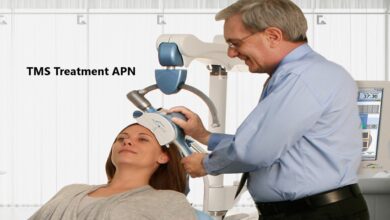Materials That Illuminate Medicine: From Metal Strength to Optical Precision

If we talk about the advanced healthcare field, then there are many factors that should not be compromised. Accuracy, readability, and strength are not negotiable among those factors. Although the attention of the world is usually focused on doctors and innovative diagnostic equipment, the material science of medical instruments is the silent helper of life-saving procedures. Medical technology relies on advanced engineering materials, whether it is the stiff surgical equipment or the flexible optical equipment.
In this article, we will explain the intertwining of strength and light to enhance modern medicine starting at the molecular level and ending with the reliability of surgery.
Tungsten Steel Products: Strength and Stability in Medical Manufacturing
Known as tungsten steel, also as tungsten carbide or tungsten alloy, this is one of the hardest materials known. It has very high melting point, unsurpassed tensile strength and high wear and corrosion resistance. Such properties render tungsten steel products to be the best precision manufacturing products particularly in the manufacture of medical instruments.
Tungsten steel finds extensive use in surgical tool manufacturing: the metal is used to make forceps, scissors, surgical blades, and orthopedic tools. The toughness of the material used makes these tools retain sharpness and structural integrity even after being sterilized and used severally.
Moreover, the density of tungsten and its bio-compatibility is helpful in radiation shields and cancer therapy apparatus. Tungsten based parts are also used in medical imaging settings to protect sensitive parts of the human body by exposing them to less radiation thereby protecting patients and medical personnel.
Why Tungsten Steel Matters in Precision Instrumentation?
Every millimeter is important in robotic-assisted surgeries and minimally invasive surgery. Precision tools should be capable of working perfectly within the tight spaces within the body without bending or breaking. In this case, tungsten steel products are invaluable in terms of their mechanical reliability.
Microsurgical instruments frequently need a mixture of hardness and flexibility, a tradeoff that tungsten steel can provide by means of alloyed and machined to specifications. The tungsten is also able to provide a greater balance and weight distribution in the hand-held surgical equipment due to the high density of the material. This improves the tactile feedback and control of a surgeon that is very important in complex surgeries.
Additionally, a great number of diagnostic tools contain movable parts or sharp ends which have to overcome wearing-out with the course of time. The durability of tungsten makes the tools last longer and it does not wear out easily thus saving the hospital the cost of replacing the tools and enhancing efficiency in operations. Whether it be dental burrs, catheter tips or biopsy needles, the tungsten steel impact is ubiquitous in the high precision medical world today.
Endoscope Light Guide Bundles: Lighting the Way Inside the Body
The invention of endoscopy has revolutionized the field of diagnostic medicine since it enables doctors to view the inside organs without any surgery. Central to this transformation are endoscope light guide bundles—sophisticated fiber optic systems that transmit light from an external source to illuminate internal tissues and cavities.
These cables are usually composed of hundreds or thousands of flexible optical fibers which are bound together. The fiber construction is either medical-grade glass or polymer. It is intended to remain clear, flexible, and resistant to heat. The outcome is continuous flow of cool, bright light that enables endoscopes to take high-resolution pictures within the body, frequently in real time.
Modern endoscope light guide bundles are used in gastrointestinal, urological, gynecological, and pulmonary procedures. Image quality, hence diagnosis accuracy and treatment planning, are directly related to their performance. These bundles allow superior illumination with minimal bulk or heat and allow better visibility even in anatomically challenging locations.
Combining Material Durability with Optical Performance:
The integration of tungsten steel products and endoscope light guide bundles in endoscopic instruments demonstrates a powerful synergy between mechanical strength and visual precision. Many rigid and flexible endoscopes have a strengthening of tungsten-based alloys on the outer sheath or insertion tube.
Meanwhile, the technical inside of such gadgets particularly the light and image functions depend on the sophisticated light guide bundles to operate. Taken together, they make the device durable and functional, which allows repeatability in difficult clinical settings.
Both materials are optimized further in robotic-assisted surgical systems, as in laparoscopic procedures. The frames are made of tungsten to give structural support, and the bundling of fiber optics is used to give high-definition cameras high quality light. This union of power and visibility makes it possible to make more precise dissections, suturing, and diagnosis even when visibility is poor.
Further, the advent of disposable endoscopes and the use of modular components of devices, manufacturers are creating more hybrid solutions that retain the durability of tungsten, but allow a cost-effective use of light-transmitting components. The final result is to have reliability, sterilization compatibility and ergonomics with a user-friendly unit.
Endoscopic Design and Material Science of the Future:
Medical procedures are increasingly becoming specialized and the materials, which facilitate them, should be no exception. Future directions of endoscopic tool design are skewing towards decreasing diameters, increasing flexibility and improved image transmission. Future endoscope light guide bundles are expected to be thinner, more heat-resistant, and capable of supporting multi-wavelength light sources for enhanced contrast and tissue differentiation.
Conversely, tungsten steel products are being designed with nano-coatings and composite combination to enhance wear resistance and cut on weight. This brings in the possibility of even more fine microsurgical instrumentation and robotic extensions that require sub-micron calibration.
The processing of these materials is also starting to be defined by innovations in 3D printing and additive manufacturing. The next generation of endoscopes might be more adaptive, efficient, and environmentally friendlier with the help of tungsten-infused filaments and the custom-structured fiber bundles.
Finally, sustainability and biocompatibility are the main issues. The light guides and the tungsten parts are being redesigned to be easier to sterilize, more safe to dispose and have a longer life-time, which is in line with the green hospital initiatives going on all over the world.
Conclusion:
Modern medicine owes its advances not only to the scientific discoveries, but also to the materials that allow precision and reliability. Tungsten steel products bring structural strength and endurance to countless medical tools, while endoscope light guide bundles deliver the optical clarity required for accurate diagnosis and minimally invasive treatment.
In unison with one another, they are the epitome of the marriage between metal and light, between strength and delicacy, a marriage that characterizes innovation in the 21st-century healthcare industry. With the ongoing technology development, the use of these materials will only increase, allowing safer, smarter, and more effective medical interventions all over the world.




